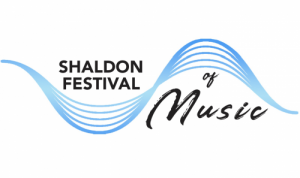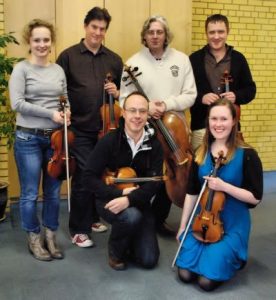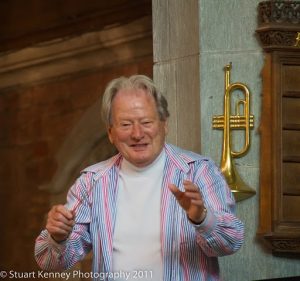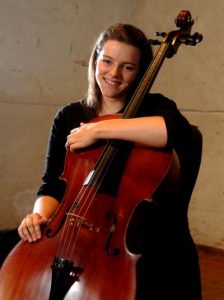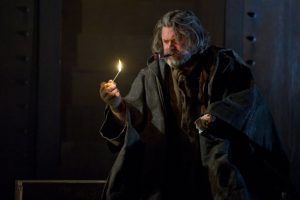Shaldon Festival 2011
Click on the past performances to jump to the information or scroll down the page.
Choral Workshop and Informal Concert 2011 directed by Sir Neville Marriner
English Touring Opera: Puccini Opera Gala
Innovation Chamber Ensemble
Concert
Sunday 19 June 2011
Innovation Chamber Ensemble
(Strings from the City of Birmingham Symphony Orchestra)
Concert Supported by the Exeter & District Classical Music Trust
Violins: Zoë Beyers, Peter Campbell-Kelly, Lena Zeliszewska, Byron Parish
Violas: Adam Romer, Amy Fawcett
‘Cellos: Richard Jenkinson, Kate Setterfield
Programme:
Shostakovich Two Pieces for Octet
Brahms Sextet in B flat major op 18
Mendelssohn Octet in E flat op 20
Detail:
Many of the Shaldon Festival audience will have been familiar with the chamber music works performed at Sunday’s concert as they are generally included in most string players’ repertoire. However not everyone will have heard them played with the energy and passion displayed by the Innovation Chamber Ensemble!
The concert opened with Shostakovich’s Two Pieces for String Octet. This was his first chamber work, considered avant-garde, written in 1924 when he was still a student. The first piece was influenced perhaps by the revolutionary romanticism pervading 1920s Russia. The second piece, a Scherzo – full of clashing dissonances, loud pizzicato and glissandi associated with the composer – has been described as the wildest movement in all octet repertoire. It is not difficult to understand why Shostakovich has been described by some as the original king of Hip Hop!
This was followed by the Sextet for Strings in B flat Major by Brahms, written in 1860 at a particularly happy time of his life. The first movement opens with a ravishing cello solo followed by an andante movement of variations on a folk melody. Clara Schumann was so taken by one variation that Brahms arranged it for solo piano and presented it to her on her birthday. The work continues with a Scherzo in which the influence of Haydn can be heard, and ends with a Rondo whose opening cello theme transports the listener into a ‘pure world of beauty’.
The final work to be played was the String Octet in E flat Major, by Mendelssohn, written when the composer was just 16 years old and already a celebrated child prodigy. The work begins with an Allegro Moderato, followed by a slow and sonorous Andante. The Scherzo is the most well-known movement – an eight-part energetic fugue, likened to fairy music vanishing into thin air. It ends with a Presto, demonstrating Mendelssohn’s brilliant command of counterpoint. This work became one of the composer’s favourites.
It may be some time before we see a chamber ensemble of such talented string players. Their rapport with each other, the smiles, the frequent eye contact and evident pleasure in playing together on such beautiful instruments, was a joy to behold. A magnificent concert and a great treat for the Festival supporters who responded with huge enthusiasm and sheer delight! The Innovation Chamber Ensemble very generously rewarded us with an encore – repeating the last movement of Mendelssohn’s Octet to shouts and loud cries of appreciation.
A truly wonderful evening! We all hope very much that they will make a return visit very soon.
Hilary Morgan-Richards
Festival worth trip of 4,000 miles
Bill Studdiford of St Petersburg, USA writes:
As a visitor from America, I can’t help thinking how fortunate you all are in the area to have the yearly Shaldon Music Festival.
I travelled more than 4,000 miles to enjoy two evenings of it – and you are all within easy driving (or walking) distance.
Watching Sir Neville Marriner from only about 5ft away conducting more than 200 choir members, four soloists and two musicians was a delight on Saturday night. I’ll never again hear Rossini’s Petite Messe Solennelle without remembering it at St Peter’s Church in Shaldon, with its remarkable acoustics.
On Sunday night, the Innovation Chamber Ensemble was another magnificent evening to experience – those glorious strings! Had I known 70 years ago a violin could make such magic, I might have continued my own studies.
My special thanks to President Eileen Croxford Parkhouse, and the Sir John and Lady Amory’s Charitable Trust, along with the other trusts, whose generosity made this splendid Shaldon Festival possible – not forgetting the 105 patrons listed in the programme.
I’m already planning a return visit in 2012 for more – and hope to see you there.
Teignmouth Advertiser/Post, Friday, June 24, 2011
Choral Workshop and Informal Concert 2011 directed by Sir Neville Marriner
Choral Workshop
Saturday 18 June 2011
GIOACHINO ROSSINI Petit Messe Solennelle
Directed by SIR NEVILLE MARRINER
Piano: Peter Adcock
Organ: Jonathan Watts
Soprano: Héloïse West
Alto: Rebecca Smith
Tenor: Gitai Fisher
Bass: Julian Rippon
Detail:
On Saturday 18 June Shaldon Festival was delighted to welcome a return visit by Sir Neville Marriner to conduct their annual choral workshop and concert; before he retired Sir Neville was for many years the distinguished conductor of the world famous Academy of St Martin in the Fields.
The Shaldon Festival Choir joined with four superb soloists, Héloïse West soprano, Rebecca Smith contralto, Gitai Fisher tenor and Julian Rippon bass, in a marvellously stirring performance of Rossini’s Petite Messe Solonnelle; this work is a great favourite of choirs, being full of beautiful melodies and joie de vivre. Both the workshop during the day and the evening concert were brilliantly accompanied by Peter Adcock on piano and Jonathan Watts on the organ.
The concert proved to be a memorable finale to a most enjoyable and exciting day. The four soloists sounded wonderful both in their solos and when joining together with each other or the choir. For the audience the final movement, the Agnus Dei, which is an alto solo with chorus, raised the whole day to a totally emotional higher level. Rebecca Smith’s singing of “Lamb of God, who takes away the sins of the world” started very softly and slowly crescendoed to a truly dramatic climax with the choir joining her in a magnificent tutta forza final “Grant us peace”.
This was Sir Neville’s fourth visit to Shaldon to conduct a choral workshop and Shaldon Festival is most grateful for his magnificent continuing and generous support.
Ro Rickett
South West Music School
Concert
Friday 17 June 2011
SOUTH WEST MUSIC SCHOOL
Programme introduced by Lisa Tregale, CEO and Artistic Director SWMS
Annabel Lainchbury Violin
Freya Hicks Viola
Indigo Hicks Cello
Divertimento in D major FRANZ JOSEPH HAYDN
Annabel Lainchbury Violin accompanied by Peter Hurst
Sonata for violin and piano in E minor K.304 WOLFGANG AMADEUS MOZART
Indigo Hicks Cello accompanied by Peter Hurst
Fantasiestücke ROBERT ALEXANDER SCHUMANN
Annabel Lainchbury Violin Freya Hicks Viola
Indigo Hicks Cello Edward Francis-Smith Double Bass
String Sonata No. 2 in A major GIOACHINO ROSSINI
Benjamin Comeau Piano
Ondine MAURICE RAVEL
My Favourite Things RICHARD RODGERS and OSCAR HAMMERSTEIN
Annabel Lainchbury Violin Freya Hicks Viola Indigo Hicks Cello
Edward Francis-Smith Double Bass Ben Comeau Piano
Piano Quintet No.1 Op.50 LOUISE FARRENC
Following the long tradition of devoting the Friday evening Shaldon Festival performance to young musicians, for the first time in the Festival’s history, South West Music School was invited to play. SWMS is a virtual centre of advanced training working with exceptionally talented young musicians across the whole of the SW with young musicians aged 8 – 18. The performers at the Shaldon Festival on the 17th June all from Cornwall: St Just, Penzance and Truro were presented to the audience by Lisa Tregale, CEO and Artistic Director of SWMS. The performers comprised: Annabel Lainchbury – violin; Freya Hicks – viola; Indigo Hicks – cello; Edward Francis-Smith – double bass; Benjamin Comeau – piano.
The performance began with Haydn’s Divertimento in D major with Annabel Lainchbury – violin; Freya Hicks – viola; Indigo Hicks – cello; Edward Francis-Smith – double bass. This Divertimento is from an earlier period in Haydn’s life and would undoubtedly have been written for a domestic group of players. Intimate in character, this piece demonstrates a charm, wit and elegance that is evident in all of Haydn’s works and as with all Haydn, aims to put a smile on the listener’s face. This piece was originally for string trio. However, for this performance the double bass doubled the lower line. From the opening bars it was clear that the performers understood the nature of the work they were performing. The playing was light and elegant, well-timed and nicely phrased. This was truly an ensemble piece with the players listening carefully to each other determined to ensure the delicate balance of the writing was maintained.
This was followed by Mozart’s Sonata No. 21 in E minor K.304 for violin. The violinist was Annabel Lainchbury accompanied by Peter Hurst on piano. Mozart wrote his E minor violin sonata in 1778 shortly after the death of his mother, which might explain its more melancholy and reflective character; it is his only violin sonata written in a minor tonality. The second movement is marked at the speed of a Minuet but is not meant to be danced to, it is rather serious and wistful unlike other Symphonic Minuets which were altogether lighter and more good natured. Annabel played with great skill and sensitivity but the sound was somewhat overpowered by a too intrusive piano part and the overall balance of the piece was lost. This was also true in the third performance. This was Schumman’s Fantasiestucke. The Fantasiestucke were written in 1849 for clarinet and piano, with the option of violin or cello. They were originally named Soireestucke. The evocative and expressive opening piece, a song in all but name, is followed by the busy piano accompaniment of the second and the energetic third, with its cross-rhythms and relaxed central section. The cello was played by Indigo Hicks accompanied by Peter Hurst. However, even more obviously than in the Mozart, the piano playing was simply too overpowering for the cello and much of the beauty of the piece – and Indigo’s contribution with its glimpses of beautiful phrasing and warm tones – was lost.
The final piece before the interval was Rossini’s String Sonata no. 2 in A major. Rossini was not only younger than Mozart and Mendelssohn when he completed his set of six String Sonatas but was also far less musically educated. Keen, however, to have his fair share of challenges he included all the same soloistic material that is found in the first violin part. The cello and bass are truly independent of each other and each gets a chance to shine on occasions with the bass playing the part of the musical joker throughout the movement. The whole piece is full of the freshness and enthusiasm of youth and this made an excellent choice for the young players who comprised: Annabel Lainchbury – violin; Freya Hicks – viola; Indigo Hicks – cello; Edward Francis-Smith – double bass. The sparkle and wit of the writing shone through with the players clearly enjoying their playing and allowing each instrument to have its moment in the sun, as Rossini intended. The mysterious and mischievous opening to the second movement was very well sustained before the melody opened out into a more expressive mood. The ensemble managed to maintain necessary musical tension even in the slower passages when it could so easily have flagged. The ensemble was very well led by Annabel who gave clear direction to the ensemble throughout. Warm applause from an appreciative audience ended the first half.
In the second half, we saw pianist Benjamin Comeau in two solo pieces: Ravel’s Ondine (a movement from Gaspard de la Nuit: Trois poèmes pour piano d’après Aloysius Bertrand) and Basin Street Blues written by Spencer Williams and made famous by Louis Armstrong. Because of its technical challenges and profound musical structure, it is considered one of the most-difficult solo piano pieces in the standard repertoire. The amazing thing is that Benjamin made the playing of this fiendishly difficult work appear effortless. Completely at ease at the keyboard and playing without music, he mastered this extraordinary work and brought gasps of admiration from the audience. He negotiated the bear traps of the rapid changes of dynamics and unusual harmonics with consummate skill. But for me the revelation of the evening was his improvisation of Basin Street Blues. Opening with the simple melody line, he then simply took off on a fascinating journey that became more and more interesting and creative as it unrolled. Improvisation of this kind from someone so young is truly rare and it takes an exceptional musical ability – and confidence – to pull it off. Ben did.
We heard Ben again in the final work of the evening the Louise Farrenc Piano Quintet no.1 op.50 performed by Annabel Lainchbury, Freya Hicks, Indigo Hicks, Edward Francis-Smith and Ben Comeau. Paris in the nineteenth century was a flamboyant world dominated by opera, dramatics, stage works and notable men. Louise Farrenc differed from the French norm in many ways, not least the fact she was a woman. Her compositions were more intimate than most, drawing influence from the Germanic recent past rather than the contemporary salon music that was common in France which left her with a reputation of being behind the times. Farrenc demonstrated huge technical proficiency at the piano and in later life gained the honour of being the only woman to hold a professorship at the Paris Conservatoire. Her technical ability is demonstrated in the virtuosity of the piano part to this quintet. This piece demonstrates some beautiful melodic writing in the strings and interweaving counterpoint makes it both challenging to play and pleasing on the ear. It was a bold choice as the final piece of the evening, being probably unknown to almost everyone in the audience. What we experienced was the very best of the ensemble playing the musicians were capable of. They played with great commitment and purpose, clearly determined to give the work its deserved full credit. The piano holds this composition together and it was a further mark of Ben’s talents that he did not overplay the piano’s role in the piece, providing instead an intelligent sustaining core and visibly giving confidence to the other players to play their best, which to a player they did. Well led by violinist Annabel, they gave a warm and expressive performance of a work they believed in and wanted their audience to enjoy. Well done SWMS!
Roger Kirk
English Touring Opera: Puccini Opera Gala
Concert
Thursday 16 June 2011
English Touring Opera: Puccini Opera Gala
Soprano: Julie Unwin
Tenor: Charne Rochford
Baritone: Simon Thorpe
Narrator: Johnny Langridge
Piano: Timothy Carey
Programme
Extracts from Il Tabarro (The Cloak)
MICHELE Simon Thorpe GIORGETTA Julie Unwin LUIGI Charne Rochford
La Bohème Act 3:
Mimì! – Speravo di trovarti qui/Marcello, finalmente!/Mimì è una civetta/Mimì è tanto malata! – to end of trio
MIMI Julie Unwin RUDOLFO Charne Rochford MARCELLO Simon Thorpe
La Bohème Act 4:
O Mimì, tu più non torni
RUDOLFO Charne Rochford MARCELLO Simon Thorpe
Tosca Act 2:
Salvatelo! … Lo? … Voi!/Se La Giurata Fede Debbo Tradir … Già Mi Struggea L’amor/Vissi D’arte
TOSCA Julie Unwin SCARPIA Simon Thorpe
Madama Butterfly Act 1:
Vieni La Sera/Bimba Dagli Occhi Pieni Di Malia/Vogliatemi Bene, Un Bene Piccolino
CIO-CIO-SAN Julie Unwin PINKERTON Charne Rochford
Detail:
This was the first time ETO had been invited to perform at the Festival. The Puccini programme was both imaginative and accessible. Puccini is the most popular of opera composers, with readily recognisable music, and as such attracted first time audience members to the Festival
The evening began with a concert version, in costume, of one of his less well-known one-act operas Il Tabarro (The Cloak). The company of three principal singers, (Julie Unwin, Simon Thorpe, Charne Rochford) who had been touring the full opera for some months, gave an intense, rich and varied portrayal of the pathos, despair, erotic passion and tenderness required of this work. The setting was a gloomy barge on the river Seine and we, the audience, were soon eased in to their world and emotionally engaged with the slow build up of tension that led to a full-blooded melodramatic finale. Indeed, because of the intimacy of the space, it felt as if we were on stage with the characters. An audience member commented on feeling emotionally drained at the end.
The second half of the evening was made up of well-known arias, duets and trios taken from La Bohème, Tosca and Madama Butterfly. It concluded with the three singers sharing an encore of Nessun Dorma (Turandot Act 3). In addition, to provide a moment of both contrast and calm in the programme, the extremely able accompanist Timothy Carey entertained us with two delightful melodies that included The Intermezzo from Manon Lescaut.
The English Touring Opera is a class act, travelling to all parts of the country with their performances. We are delighted they made a date to open this year’s Shaldon Festival with a feast of the glorious music of Puccini.
Leon Winston
